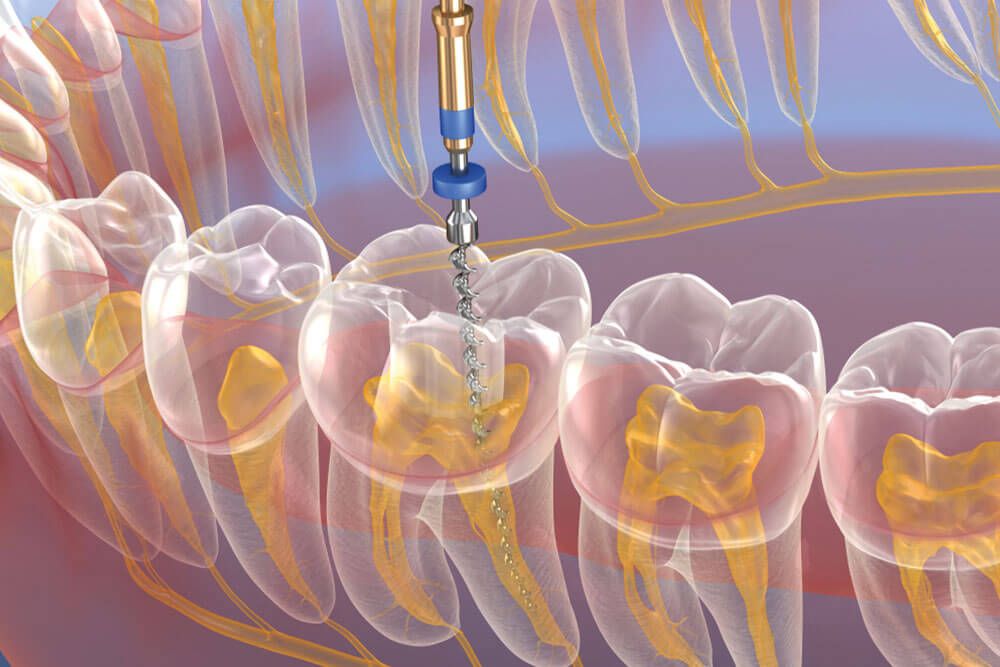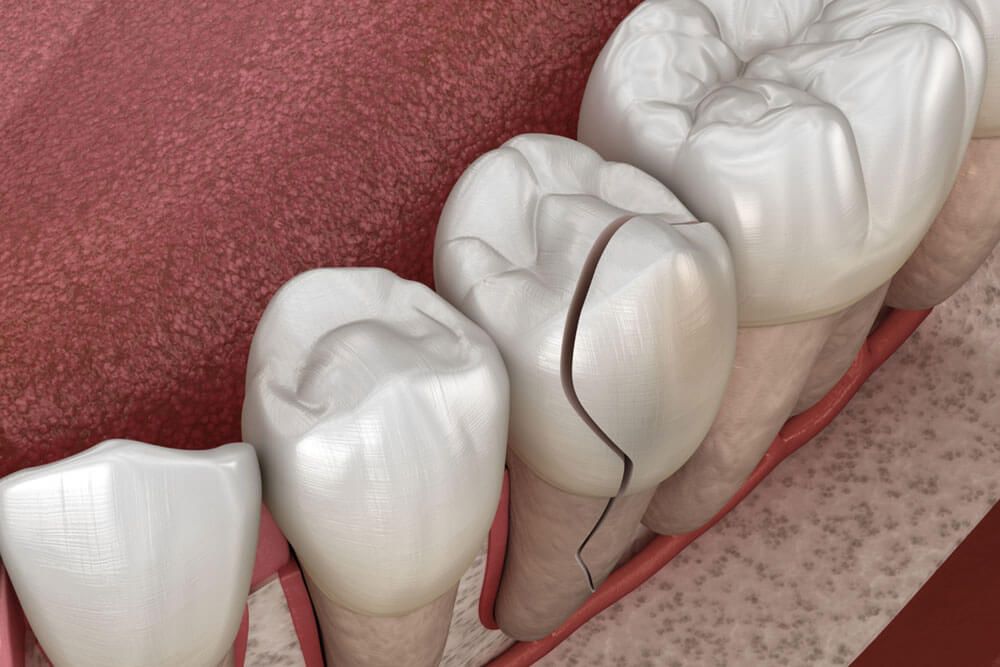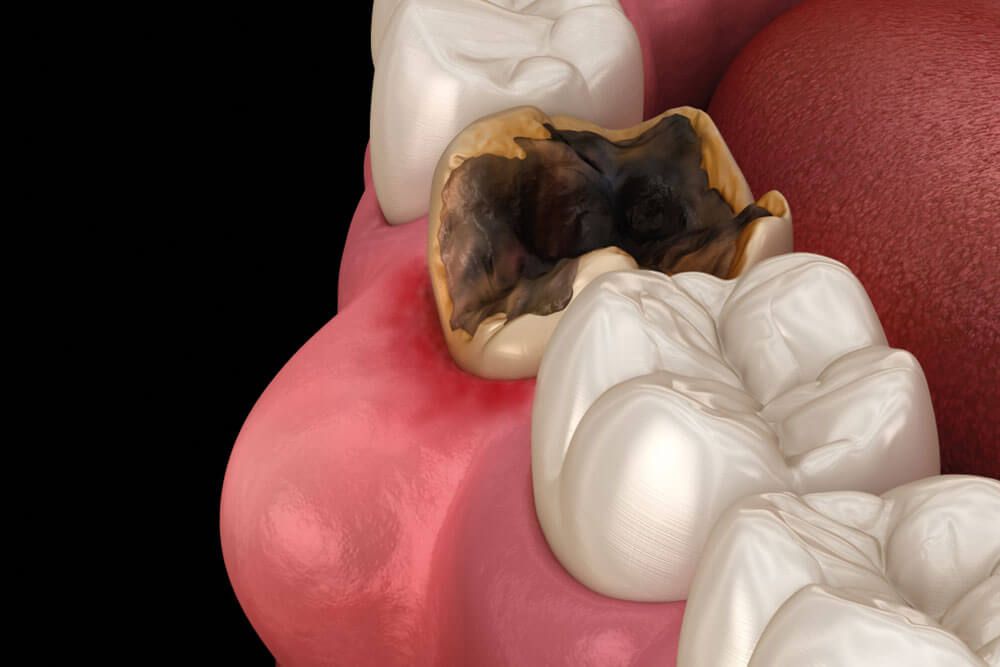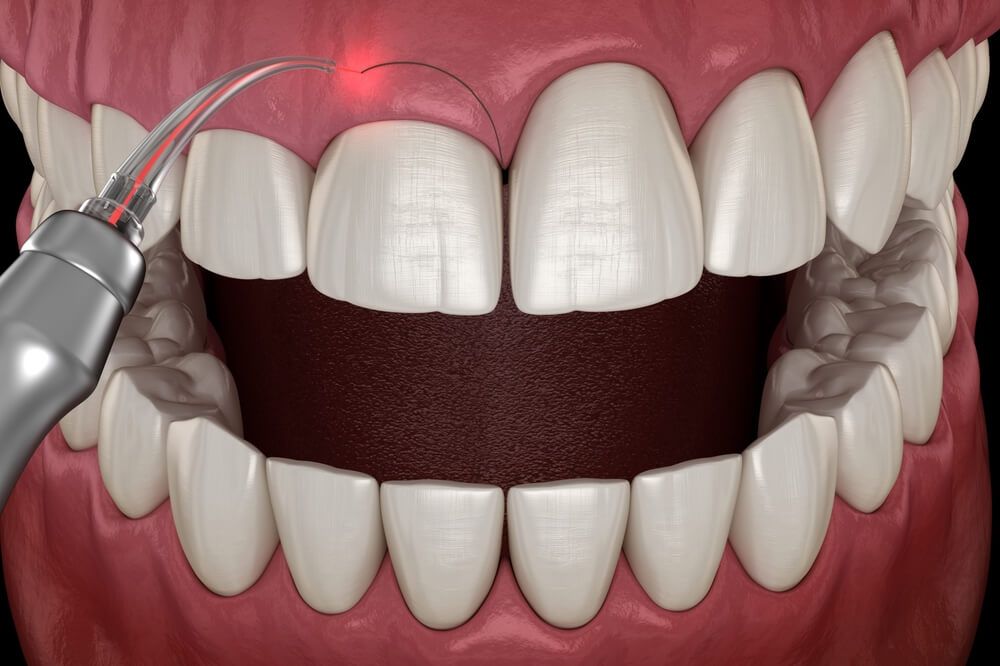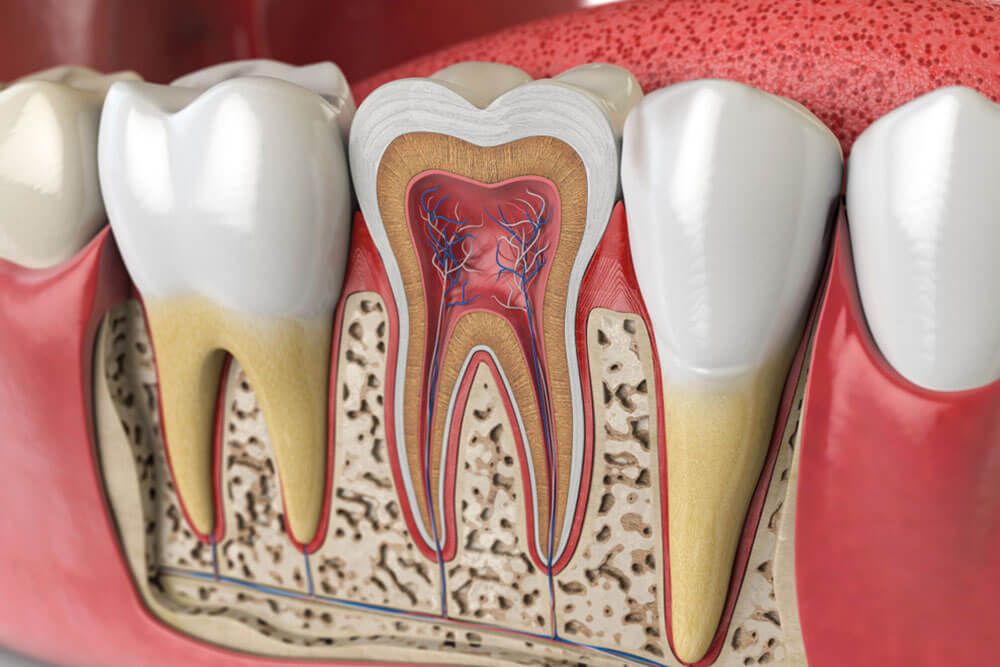How Does A Failed Root Canal Occur?
Root canal failure occurs when the treated tooth becomes reinfected and requires new treatment. There are various causes of root canal failure, ranging from malpractice to patient neglect. Some of the most common include:
Persistent Reinfection
If the treatment was successful but reinfection occurs due to unrelated causes, a second root canal treatment may be necessary. Possible causes of reinfection (unrelated to treatment success) include traumatic oral injury that cracks the treated tooth or poor dental habits of the patient.
Underfilling or Delayed Filling
Treatments that delay filling or crown placement leave the treated tooth at risk. Dentists often schedule multiple appointments for a complete root canal treatment, waiting at least two days and up to 7 to place the crown and apply any sealants. The longer the dentist waits, the more vulnerable the tooth is to reinfection.
Inadequate Irrigation
Typical root canal irrigation tools sometimes do not reach the deepest sections of the root system. If the dentist is not thorough in the irrigation of the canal, bacteria and infected tissue may be left behind. After the treatment, this infection will continue to grow, eventually reinfecting the entire tooth.
Calcification
Older patients, or those that have experienced significant dental trauma, often present extensive calcification of their teeth. Calcification refers to a build-up of hard, calcified tissue where dental pulp used to be. Significant calcification makes it difficult for dentists to perform a successful root canal treatment. With additional imaging and proper instruments, experienced endodontists can locate canal entrances even in the most calcified teeth.
General Dental Practitioner (GDP) Treatment
Teeth treated by GDPs are more likely to fail than teeth treated by endodontists. While general dentists provide excellent cleaning services, endodontists root canal specialists. Endodontists have far more experience and education than GDPs and should be consulted for root canals or more extensive dental procedures.
Complex Root Anatomy
Patients sometimes have a more complex root canal system than usual. Curved, narrow, or extensive canals are more difficult to clean, and infection may be missed. Those that present complex canal systems require additional imaging before their procedure.
Patient’s Neglect
Even if the treatment was performed successfully, neglect on the patient’s end can lead to reinfection. There are specific root canal aftercare instructions that patients must follow after their treatment for successful healing. Poor dental hygiene promotes infection – patients must care for their teeth.
A root canal is a complex procedure and reinfection is possible if the right steps are not taken before, during and after treatment. If reinfection is untreated, patients may lose the tooth.
Symptoms Of A Failed Root Canal
The most common sign of a failed root canal is pain or infection in a tooth that was recently treated with a root canal procedure. Reinfection can occur quickly, within a few weeks or months of the procedure. Sometimes the symptoms will be similar to the symptoms of the original reinfection, or they may present differently.
Common signs include:
- Pain – Tenderness is often one of the first signs of infection. While pain is common the first few days after your treatment, pain that lingers or increases after the procedure is a bad sign. Your tooth may heal initially and months later become painfully reinfected.
- Swelling – Mild swelling at the site of the procedure is common. New or persistent swelling, however, may indicate reinfection. Pain along with swelling of the face and neck is a sign of serious infection and should be treated immediately.
- Discharge – Bloody, foul-smelling pus or discharge is a sign of infection and should not occur after treatment.
- Sensitivity – Persistent sensitivity to heat, cold, and pressure is an early sign of infection. This is often first noticed as tenderness in the treated tooth when chewing or biting down.
- Boil On Gum – A small boil or pimple-like bump on the gum near your treated tooth is a sign of deep infection. The tooth may also be tender and may present discharge or a foul smell.
If you are experiencing any of the above symptoms, it’s important to call your endodontist in Utah. Greater Endodontics offers root canal retreatment procedures for those suffering from a failed root canal.
Failed Root Canal Retreatment
There are several options available following a failed root canal, depending on the progression of infection.
- Root Canal Retreatment – Understandably, you may be reluctant to receive another root canal treatment if your first one failed. Newer endodontic technologies, like GentleWave, promise root canal success. The most important thing is that you schedule your root canal retreatment with an experienced endodontic specialist.
- Apicoectomy – If retreatment is impossible because of tooth anatomy, post-procedure restoration, or a dental crown, then an apicoectomy is performed. In this procedure, the root canal system is completely removed from the tooth and then the surrounding gum area is sealed.
- Extraction – In the most extreme cases, when the tooth cannot be saved, an extraction is necessary.
The best way to fix a failed root canal is with professional retreatment. At Greater Endodontics, we specialize in procedures dealing with the root or pulp of the tooth and will work to save your natural teeth whenever possible. Using an innovative, drill-free root canal alternative, we achieve successful root canal retreatment.
GentleWave – An Alternative Treatment
Traditional root canal procedures often fail because of outdated technology. The GentleWave procedure offered at our office is more effective and less painful than traditional treatment. This procedure uses advanced fluid dynamics that clean deeper than dental files can. As a less invasive alternative, GentleWave is a preferred procedure for many endodontic patients. This option effectively removes bacteria throughout the tooth while reducing discomfort, pain and risk of reinfection.
Who Is Responsible?
While malpractice is rare, it occurs. If you believe that your previous dentist failed to provide you with safe, effective treatment, they may be responsible for your failed root canal. Most often, there are a variety of factors that can influence the failure of a root canal, and it is not the dentist’s fault. With that said, it’s always best to schedule a root canal procedure with an endodontist, not a GDP.
Schedule A Root Canal Retreatment Procedure Today
If you believe you are experiencing the symptoms of a root canal reinfection, you must attend to it as quickly as possible. Don’t let the infection go unchecked, as it can spiral out of control fast. The more infected your tooth is, the more painful it will be! Ready for a deep clean and comfortable dental experience? Contact us today to schedule an appointment, or to learn more about our root canal retreatment options.

